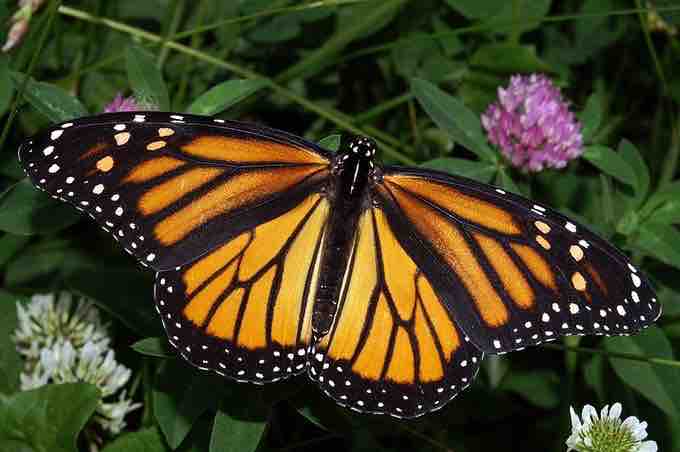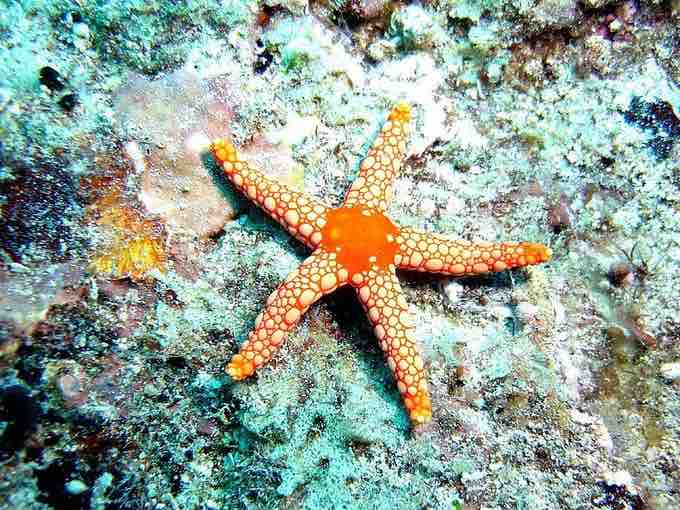Animal Characterization Based on Body Symmetry
At a very basic level of classification, true animals can be largely divided into three groups based on the type of symmetry of their body plan: radially symmetrical, bilaterally symmetrical, and asymmetrical. Only a few animal groups display radial symmetry, while asymmetry is a unique feature of phyla Porifera (sponges). All types of symmetry are well suited to meet the unique demands of a particular animal's lifestyle.
Radial Symmetry
Radial symmetry is the arrangement of body parts around a central axis, like rays on a sun or pieces in a pie. Radially symmetrical animals have top and bottom surfaces, but no left and right sides, or front and back. The two halves of a radially symmetrical animal may be described as the side with a mouth ("oral side") and the side without a mouth ("aboral side"). This form of symmetry marks the body plans of animals in the phyla Ctenophora (comb jellies) and Cnidaria (corals, sea anemones, and other jellies) . Radial symmetry enables these sea creatures, which may be sedentary or only capable of slow movement or floating, to experience the environment equally from all directions.

Radial symmetry
Some organisms, like sea anemones (phylum Cnidaria), have radial symmetry.
Bilateral Symmetry
Bilateral symmetry involves the division of the animal through a sagittal plane, resulting in two mirror-image, right and left halves, such as those of a butterfly, crab, or human body . Animals with bilateral symmetry have a "head" and "tail" (anterior vs. posterior), front and back (dorsal vs. ventral), and right and left sides. All true animals, except those with radial symmetry, are bilaterally symmetrical. The evolution of bilateral symmetry and, therefore, the formation of anterior and posterior (head and tail) ends promoted a phenomenon called cephalization, which refers to the collection of an organized nervous system at the animal's anterior end. In contrast to radial symmetry, which is best suited for stationary or limited-motion lifestyles, bilateral symmetry allows for streamlined and directional motion. In evolutionary terms, this simple form of symmetry promoted active mobility and increased sophistication of resource-seeking and predator-prey relationships.

Bilateral symmetry
This monarch butterfly demonstrates bilateral symmetry down the sagittal plane, with the line of symmetry running from ventral to dorsal and dividing the body into two left and right halves.
Animals in the phylum Echinodermata (such as sea stars, sand dollars, and sea urchins) display radial symmetry as adults, but their larval stages exhibit bilateral symmetry . This is termed secondary radial symmetry. They are believed to have evolved from bilaterally symmetrical animals; thus, they are classified as bilaterally symmetrical.

Secondary radial symmetry in echinoderms
The larvae of echinoderms (sea stars, sand dollars, and sea urchins) have bilateral symmetry as larvae, but develop radial symmetry as full adults.
Asymmetry
Only members of the phylum Porifera (sponges) have no body plan symmetry. There are some fish species, such as flounder, that lack symmetry as adults. However, the larval fish are bilaterally symmetrical.